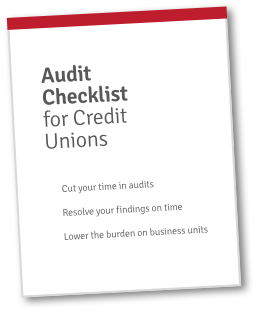This blog is based on part of an article I wrote for The Audit Report, the official publication of the Association of Credit Union Internal Auditors.
In credit unions, the relationship between the CEO and the chief auditor is complex. Operationally, the chief auditor is part of the credit union’s team and is responsible to the CEO. Yet typically, the chief auditor is ultimately responsible and accountable to the Supervisory Committee, who directs the chief auditor’s work. It’s a strange situation.
How unique is this relationship?
Imagine for a second that we’re talking about a baseball team instead of a credit union. In this scenario, the manager and coaching staff run the team… except the third base coach reports to the owner instead of the manager in the dugout.
It’s a little like that between the CEO and chief auditor.
The Strengths of the Auditor–CEO Relationship
Of course, there are good reasons for this challenging dynamic. But just because it's a challenge doesn't mean that it must lead to a negative outcome or a bad situation.
When done right, the relationship between the CEO and chief auditor provides an environment where the CEO can aggressively pursue new growth initiatives and programs without constantly worrying about what could go wrong.
When done right, the team works together to produce incredible value for the credit union and its members.
But what are the key ingredients to a functioning CEO–chief auditor relationship? I spoke with several industry veterans about how to make it successful and valuable. I’ll detail the specifics in an upcoming second part to this blog. For now, let’s talk basics.
What I learned is that there are some key attitudes and responsibilities that lead to success for both parties. My discussions revealed three key CEO responsibilities or attitudes that lead to success. It's what I call the CEO Audit Attitude Pyramid.
In the middle: Audit value
In the past, some CEOs believed that the best way to handle the audit program was to not interact at all. In some cases, they even hindered it! But the successful organizations include and empower their audit teams.
By extension, successful CEOs support the audit program and its auditors through a combination of attitude, support, and leadership. The result is an audit operation that works in tandem with the entire organization and produces an incredible amount of value.
How CEOs Can Improve Audit Performance
CEOs can ensure smooth audits and better long-term outcomes by following the three tips below (according to the CEO Audit Attitude Pyramid):
- Know that your audit team is there to help and that any unpleasant results will make your credit union stronger in the long run.
- Support your chief auditor and their team by communicating clearly and following their recommendations.
- Demonstrate that auditors are a key part of the credit union by keeping business units on board and integrating auditors with your risk and compliance teams.
In a second installment, I’ll expand on the CEO Audit Attitude Pyramid—and each point outlined in it. Incorporating specific responsibilities from those key points will ensure smoother audits…
And a better culture of compliance and accountability at your credit union! After all, top-down alignment is critical to the success of all departments, and including auditors will improve your credit union’s long-term outlook!
Join my upcoming webinar to see how you and your audit team can complete audits faster and more easily while resolving findings on time.


 Get FREE Access to the Audit Checklist for Credit Unions!
Get FREE Access to the Audit Checklist for Credit Unions!


